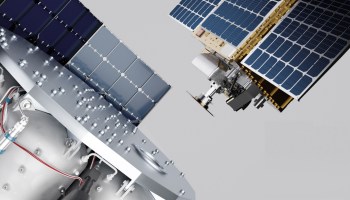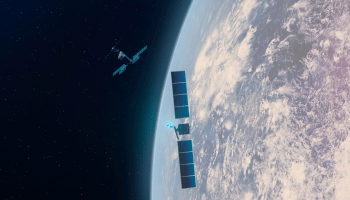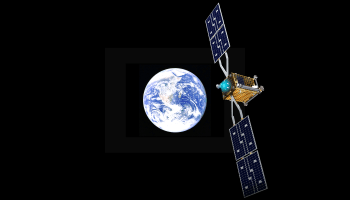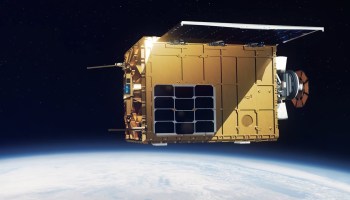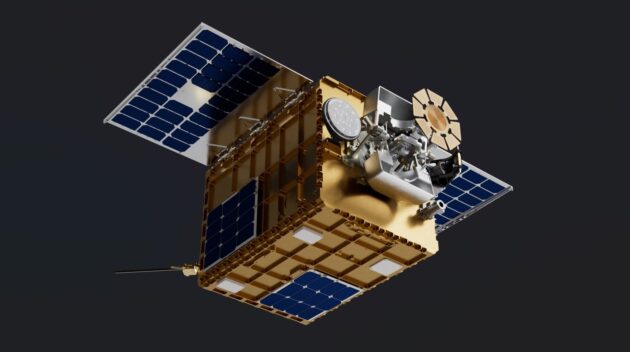
Months after Starfish Space said it was giving up on its plan to test its satellite docking system in orbit, due to a thruster failure, the Tukwila, Wash.-based startup managed to coax one last rendezvous out of its first space mission.
And this week brought more good news for Starfish Space, in the form of a $37.5 million contract from the U.S. Space Force for further work on its in-space rendezvous and docking technology.
Last month’s close encounter involving Starfish’s Otter Pup spacecraft and D-Orbit’s ION SCV006 satellite wasn’t as close as the original test plan called for, and it was up to ION to do all of the orbital maneuvering. Nevertheless, Starfish Space co-founder Trevor Bennett said the exercise brought Otter Pup’s troubled mission to a successful close.
““Executing this rendezvous means we absolutely maximized the value we could get out of Otter Pup, in spite of the numerous challenges we faced, from emergency deployment to thruster failure,” Bennett said today in a news release.
Otter Pup was sent into orbit last June as a rideshare payload on SpaceX’s Falcon 9 rocket. Starfish planned to use Otter Pup to demonstrate its Cetacean computer vision system and Cephalopod trajectory planning software by having it back away from the orbital tug was attached to — and then having it return for a docking.
Unfortunately, Launcher’s orbital tug went into a rapid spin soon after it was deployed from the Falcon 9’s upper stage. Mission managers made the emergency decision to deploy Otter Pup even though it had the same dizzying rate of spin. It took weeks for Starfish to get its tumbling spacecraft under control, and after all those weeks of jostling, Otter Pup’s thruster was no longer able to provide thrust.
“The thruster failure ruled out Otter Pup attempting a docking mission,” Starfish co-founder Austin Link said in comments that were emailed to GeekWire.
Despite that setback, Starfish’s engineers continued to look for ways to run whatever tests they could. In January, they started collaborating with D-Orbit on a bold plan in which the ION satellite played a key role.
“Starfish worked with D-Orbit to execute the rendezvous with ION by directing ION to fire its thrusters, while Otter Pup pointed its cameras to capture images of ION during the rendezvous attempts,” Link said.
Starfish calculated the plans for ION’s maneuvers, and then passed the plans along to D-Orbit for uploading. “The Starfish team collaborated closely with D-Orbit throughout the mission, sharing telemetry and specific instructions to ensure ION was maneuvered successfully for the mission,” Link explained. “The telemetry used to analyze and execute the rendezvous attempts came from both spacecraft, in addition to LeoLabs for third-party confirmation.”
Thanks to the joint effort, Otter Pup was able to come within a kilometer (0.6 mile) of ION during a series of maneuvers in mid-April. “One kilometer was a close enough distance for Starfish to get significant value out of this mission without taking orbital safety risks,” Link said.
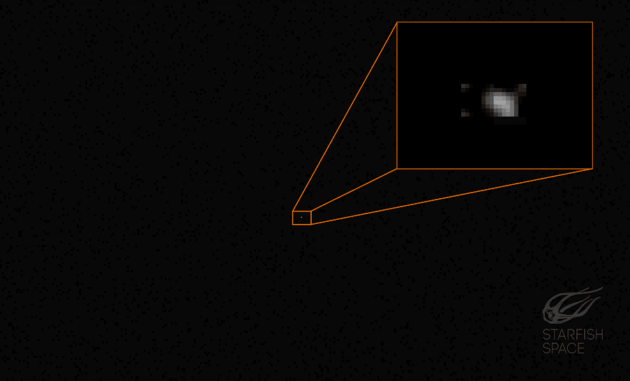
Even though there was no opportunity for a docking, Bennett said last month’s maneuvers provided “invaluable data” to guide further development of Starfish’s guidance, navigation and control software.
“Continuing to operate Otter Pup gave us a lot of value; it allowed us to increase our satellite operations experience, and to test and validate software and hardware on-orbit, including the camera system that was used to capture these images,” he said.
Does Otter Pup have any more tricks up its sleeve?
“This will be the last major milestone in the Otter Pup mission (for real this time!). Otter Pup’s orbit will naturally decay over time, and it is expected to self-dispose within a few years,” Link wrote in his email.
Link said Starfish Space is already “actively working toward the launch of a second Otter Pup mission,” and there are even bigger Otters in the offing. Full-scale Otter spacecraft could be used for satellite servicing, satellite maneuvering and in-space refueling, or for the disposal of defunct satellites and other space debris.
The newly announced $37.5 million Space Force contract will support the development of an Otter demonstration spacecraft over the course of the next four years. In its announcement of the fixed-price contract — which was awarded through the Strategic Funding Increase program, or STRATFI — the Department of Defense said the project’s goal is to “improve maneuverability on-orbit and enable dynamic space operations docking and maneuvering of Department of Defense assets on-orbit.”
